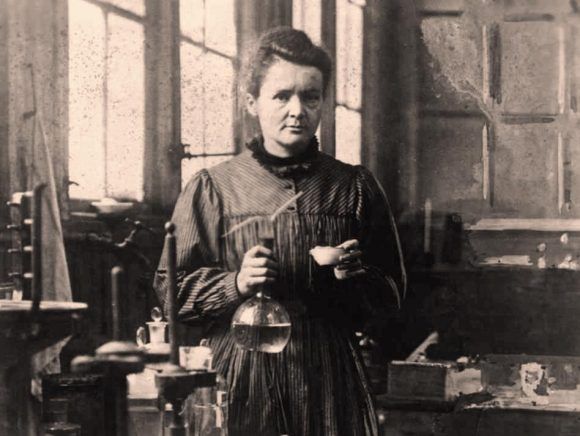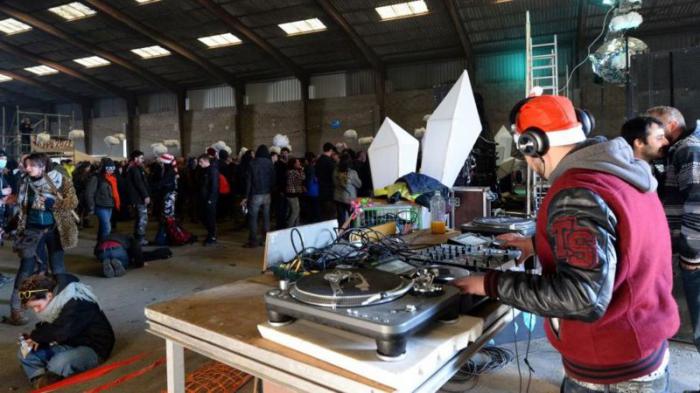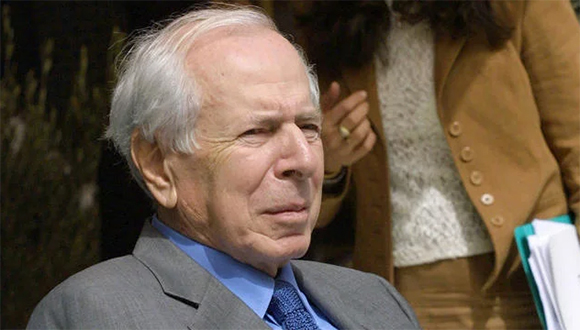France 3
Marie Curie was born on a day like today

Marie Curie was born on a day like today
By Carlos del Porto
November 7, 2017
Translated and edited by Walter Lippmann for CubaNews.

On November 7, 1867, Polish scientist Maria Salomea Slodowska Curie is born in Warsaw, Poland.
Maria Curie was a Polish physicist, mathematician and chemist, and a naturalized French citizen. She was the fifth daughter of Władysław Skłodowski, a high school teacher in physics and mathematics like her grandfather, and Bronisława Boguska, who was a teacher, pianist and singer.
In 1891, at the age of 24, Maria enrolled in the Mathematical and Natural Sciences Department at the Sorbonne University in Paris, France. From that moment on, Maria was renamed Marie Skłodowska. Despite having a solid cultural background acquired in a self-taught way, Marie had to work hard to improve her knowledge of French, mathematics and physics, in order to keep up with her peers.
In 1893, she obtained a degree in Physics and came first in her class; in 1894, she also graduated in Mathematics, coming second in her class. In that year she also met her future husband, Pierre Curie, who was a professor of physics. The two began working together in the laboratories and married on July 26, 1895.
After a double degree, the next challenge was to obtain a doctorate. Up to that time, the only woman who had been awarded a doctorate was the German Elsa Neumann. The first step was to choose the topic of her thesis. After discussing it with her husband, they both decided to focus on the work of physicist Henri Becquerel, who had discovered that uranium salts transmitted rays of an unknown nature. This work was related to the recent discovery of X-rays by the physicist Wilhelm Röntgen. Marie Curie became interested in this work and, with the help of her husband, decided to investigate the nature of the radiation produced by uranium salts.
Marie Curie and Pierre Curie studied radioactive leaves, in particular uranium in the form of pitchblende, which had the curious property of being more radioactive than the uranium extracted from it. The logical explanation was to suppose that the pitchblende contained pieces of some element much more radioactive than uranium. They also discovered that thorium could produce radioactivity. After several years of constant work, by concentrating various kinds of pitchblende, they isolated two new chemical elements.
The first, in 1898, was named Polonium in reference to their native country. The other element was named Radium, due to its intense radioactivity. Pierre had periods of great fatigue that even forced him to rest in bed, and both suffered burns and sores from their dangerous radioactive work. Shortly thereafter Marie obtained one gram of radium chloride, which she achieved after handling almost eight tons of pitchblende. In 1902 they presented the result, which brought them fame. Both Pierre and Marie accept and lend all their research without making any profit from it by means of patents, a fact that is applauded by the whole world.
Directed by Becquerel himself, on June 25, 1903, Marie defended her doctoral thesis, entitled Investigations on Radioactive Substances, before a tribunal presided over by the physicist Gabriel Lippmann. She obtained her doctorate and was awarded cum laude. Together with Henri Becquerel and Pierre Curie, Marie was awarded the Nobel Prize in Physics in 1903, “in recognition of the extraordinary services rendered in their joint research on the radiation phenomena discovered by Henri Becquerel”. She was the first woman to receive such an award.
On April 19, 1906, a tragedy occurred: Pierre was run over by a six-ton carriage and died without anything being done for him. Marie was greatly affected, but continued with her work and refused a life pension. She also took over her husband’s professorship and was the first woman to teach at the university in the 650 years since its founding. On November 15, 1906, Marie Curie gave her first lecture. Expectations were high, as it was the first time a woman had taught a class at the university. A large number of people attended; many of them were not even students. In that first session, Marie spoke about radioactivity.
In 1910 she demonstrated that a gram of pure radium could be obtained. The following year she received the Nobel Prize in Chemistry “in recognition of her services to the advancement of Chemistry by the discovery of the elements Radium and Polonium, the isolation of Radium and the study of the nature and compounds of this element”.
With a disinterested attitude, she did not patent the process of Radium isolation, leaving it open to the research of the entire scientific community. Marie Curie was the first person to be awarded two Nobel Prizes in two different fields. The other person to have won it so far is Linus Pauling (Chemistry and Peace). Two Nobel Prizes in the same field have been won by John Bardeen (Physics) and Frederick Sanger (Chemistry).
A few months after her last visit to Poland, in the spring of 1934, Curie, after going blind, died on July 4, 1934 at the Sancellemoz Clinic, near Passy (Haute-Savoie, France), from aplastic anemia, probably due to the radiation to which she was exposed in her work, and whose harmful effects were still unknown. She was buried next to her husband in the cemetery of Sceaux, a few kilometers south of Paris.
Sixty years later, in 1995, her remains were transferred, together with those of Pierre, to the Pantheon in Paris. In the speech delivered at the solemn entry ceremony, on April 20, 1995, the then President of the French Republic, François Mitterrand, addressing especially her grandchildren and great-grandchildren, emphasized that Marie had been the first woman to be buried in the Pantheon, noted that Marie, who had been the first French woman to be a Doctor of Science, to be a professor at the Sorbonne and also to receive a Nobel Prize, was again the first French woman to be laid to rest in the famous Pantheon in Paris on her own merits (in which she remains the only one to this day).
Her eldest daughter, Irène Joliot-Curie (1897 – 1956), also won the Nobel Prize in Chemistry, in 1935, one year after her mother’s death, for her discovery of artificial radioactivity.
She founded the Curie Institute in Paris and in Warsaw, and in addition to the two Nobel Prizes, won the Davy Medal in 1903, the Matteucci Medal in 1904 and the Willard Gibbs Prize in 1921.
2500+ French defy coronavirus restrictions

France: More than 2,500 people defy coronavirus restrictions at illegal holiday
France introduced fairly strict rules in mid-December to curb the spread of the coronavirus, including a curfew from 8:00 p.m. to 6:00 a.m., as it has been one of the European countries most affected by the pandemic, reporting more than 2,600,000 cases of COVID-19 and at least 64,892 deaths
Author: Web Editor | internet@granma.cuJanuary 3, 2021 09:01:14
Translated and edited by Walter Lippmann for CubaNews.

Photo: Getty Images
The French police intervened in an illegal New Year’s Eve party held at an industrial warehouse in Lieuron, northwest of the country, where about 2500 people broke the health restrictions imposed by the coronavirus, reports the BBC news portal Mundo.
Some of those attending the massive celebration came from Spain and the United Kingdom.
At least three police officers were injured. A statement from local authorities details that the police faced “fierce hostility from many in attendance.
The organizers of the event were identified, and participants were fined as they left the site.
MORE THAN 1200 FINES ISSUED FOR VIOLATING SANITARY MEASURES
More than 1,200 fines were issued for failing to observe curfew, not wearing a mask and attending an illegal meeting, Interior Minister Gérald Darmanin said on a tweet.
He reported that the police seized trucks, sound equipment and power generators at the scene, and that they were investigating the events.
The authorities reported that they had opened a cordon sanitaire around the party and urged all those who attended the event to remain isolated for seven days.
One of the participants, who identified herself as Jo, told AFP that “very few had respected social distancing” during the time of the event.
Another interviewee said that the party was “very well organized” and that there were even food stands inside.
The Ministry of the Interior organized an emergency meeting and later all the party’s vehicle exits were blocked while the police tried to control the situation.
FRANCE INTRODUCED A CURFEW FROM MID-DECEMBER
France introduced fairly strict rules in mid-December to curb the advance of the coronavirus, including a curfew from 8:00 p.m. to 6:00 a.m.
More than 100,000 police officers were deployed throughout the country to enforce the curfew and break up the holiday season.
The French police are ordered to end the underground parties as soon as they receive a complaint, and are also tasked with fining participants and identifying the organizers.
France has been one of the European countries most affected by the pandemic, registering more than 2,600,000 cases of COVID-19 and at least 64,892 deaths.
French Journalist Jean Daniel has died

Jean Daniel, Founder of Le Nouvel Observateur and One of the Most Influential Journalists of the 20th Century, Has Died
February 20, 2020
Translated and edited by Walter Lippmann for CubaNews.

Daniel was active during the last few years. Photo: AFP.
Jean Daniel, founder of the weekly Le Nouvel Observateur, a legendary journalist who lived some of the most transcendental events of the second half of the 20th century, died at the age of 99, the French publication reported Thursday.
Born in Blida (Algeria) in 1920, Daniel was one of the most influential intellectuals on the left in France and is especially remembered for his proximity to figures such as the writer Albert Camus. In 2004 he received the Prince of Asturias Award for Communication and Humanities.
Daniel gained international prestige thanks to an interview he conducted with John F. Kennedy, whose assassination he soon learned about live alongside Cuban leader Fidel Castro in November 1963.
During the Second World War had joined the resistance against the Nazi occupation. He fought alongside General Leclerc in the liberation of France and at the end of the conflict he studied philosophy at the Sorbonne University in Paris.
In 1947 he founded a cultural magazine, Caliban, with the support of Camus, and directed it until 1951.
In 1954 he started working for the weekly newspaper L’Express, covered the Algerian war and declared himself in favor of negotiating with the independence fighters of the National Liberation Front (FLN).
With the notoriety gained from his cross-relationship with Kennedy and Fidel Castro, Jean Daniel teamed up with businessman Claude Perdriel in the 1964 purchase of France Observateur (recently renamed L’Obs), which they turned into Le Nouvel Observateur, which became the leading weekly newspaper of the French left.
He remained as director until 2008 and continued as an editorialist practically until the end.
(With information from EFE)
Subscribe to Blog via Email
| M | T | W | T | F | S | S |
|---|---|---|---|---|---|---|
| 1 | 2 | 3 | 4 | 5 | 6 | 7 |
| 8 | 9 | 10 | 11 | 12 | 13 | 14 |
| 15 | 16 | 17 | 18 | 19 | 20 | 21 |
| 22 | 23 | 24 | 25 | 26 | 27 | 28 |
| 29 | 30 | |||||

You must be logged in to post a comment.